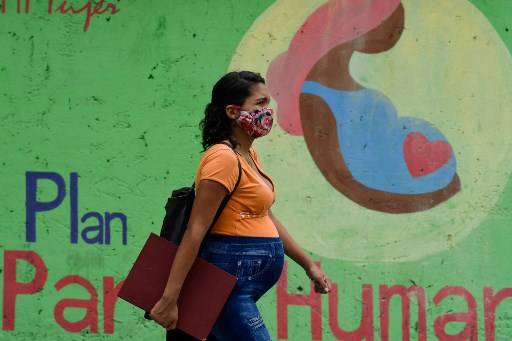
403
Sorry!!
Error! We're sorry, but the page you were looking for doesn't exist.
Reports states American births reach 45-year low
(MENAFN) Recent data released by the National Center for Health Statistics (NCHS) has revealed a concerning trend: the birth rate in the United States has plummeted to its lowest level since record-keeping began. In 2023, only 3.59 million births were recorded, marking a stark contrast to the 3.4 million births documented back in 1979. This decline comes despite a significant increase in the country's population over the past four decades, with the United States now boasting almost 335 million inhabitants compared to 225 million in 1979.
According to the NCHS report, the general fertility rate, which measures the number of births per 1,000 women of childbearing age (defined as 15–44), dropped by 3 percent from the previous year to 54.4 births. The total fertility rate, which estimates the average number of children a woman will have in her lifetime, also experienced a 2 percent decrease from 2022, resting at just 1.61. Notably, the United States birth rate has been lingering below the replacement level of 2.1 since 2007, indicating a troubling imbalance in population growth.
The report highlights a notable decline in unplanned pregnancies, particularly among teenagers, which have decreased by 2 percent from the previous year and a staggering 68 percent since 2007. Furthermore, birth rates for individuals aged 20-24 have plummeted by nearly 50 percent over the same period. The only demographic group to witness a modest increase in birth rates was Hispanic women, with a 1 percent gain from 2022.
Brady Hamilton, the lead author of the report and a member of the NCHS, emphasized that the organization's findings are based solely on birth certificate data and do not delve into the underlying causes of the declining birth rate. However, Karen Guzzo, a demographer at the University of North Carolina at Chapel Hill, points to extensive research suggesting that economic factors play a significant role in shaping family planning decisions among young Americans.
Guzzo highlights a myriad of economic and social factors contributing to the trend of delayed family formation or opting out of parenthood altogether. These include financial strain, job instability, political polarization, mounting student loan debt, challenges in accessing affordable healthcare, concerns about climate change, and the specter of global conflicts. Such factors, as Guzzo argues, have collectively created an environment where many individuals feel compelled to postpone or forgo having children altogether.
As policymakers and researchers grapple with the implications of this downward trend in birth rates, the conversation is increasingly focused on addressing the underlying economic and social challenges that may be dissuading young Americans from starting families. With the birth rate at a historic low, understanding and mitigating the factors driving this decline is paramount to ensuring the long-term well-being and vitality of the nation.
According to the NCHS report, the general fertility rate, which measures the number of births per 1,000 women of childbearing age (defined as 15–44), dropped by 3 percent from the previous year to 54.4 births. The total fertility rate, which estimates the average number of children a woman will have in her lifetime, also experienced a 2 percent decrease from 2022, resting at just 1.61. Notably, the United States birth rate has been lingering below the replacement level of 2.1 since 2007, indicating a troubling imbalance in population growth.
The report highlights a notable decline in unplanned pregnancies, particularly among teenagers, which have decreased by 2 percent from the previous year and a staggering 68 percent since 2007. Furthermore, birth rates for individuals aged 20-24 have plummeted by nearly 50 percent over the same period. The only demographic group to witness a modest increase in birth rates was Hispanic women, with a 1 percent gain from 2022.
Brady Hamilton, the lead author of the report and a member of the NCHS, emphasized that the organization's findings are based solely on birth certificate data and do not delve into the underlying causes of the declining birth rate. However, Karen Guzzo, a demographer at the University of North Carolina at Chapel Hill, points to extensive research suggesting that economic factors play a significant role in shaping family planning decisions among young Americans.
Guzzo highlights a myriad of economic and social factors contributing to the trend of delayed family formation or opting out of parenthood altogether. These include financial strain, job instability, political polarization, mounting student loan debt, challenges in accessing affordable healthcare, concerns about climate change, and the specter of global conflicts. Such factors, as Guzzo argues, have collectively created an environment where many individuals feel compelled to postpone or forgo having children altogether.
As policymakers and researchers grapple with the implications of this downward trend in birth rates, the conversation is increasingly focused on addressing the underlying economic and social challenges that may be dissuading young Americans from starting families. With the birth rate at a historic low, understanding and mitigating the factors driving this decline is paramount to ensuring the long-term well-being and vitality of the nation.

Legal Disclaimer:
MENAFN provides the
information “as is” without warranty of any kind. We do not accept
any responsibility or liability for the accuracy, content, images,
videos, licenses, completeness, legality, or reliability of the information
contained in this article. If you have any complaints or copyright
issues related to this article, kindly contact the provider above.

















Comments
No comment